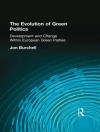The Unorthodox Presidency of Donald J. Trump explores the myriad ways in which candidate, and then president, Trump exemplifies a nontraditional version of US politics. As a candidate he eschewed the norms of campaign procedure, and, in the worst cases, human decency, in favor of a rough-and-tumble, take-no-prisoners approach that appealed to those who felt marginalized in a changing society. Though the constitutional design of the presidency has seen political outsiders rise to the office of the presidency before and maintain stability, never before has a candidate so alien to political norms risen to the highest office. The presidency of Donald Trump represents the most significant challenge in the history of the United States to whether the constitutional design and boundaries on the office of the presidency can survive the test of an occupant who is antithetical to everything in its past. The editors and their contributors highlight how Trump’s actions present direct challenges to the US presidency that have fully exposed and exacerbated long-held problems with checks and balances and led to questions regarding the potential for permanent effects of the Trump presidency on the Oval Office.
The Unorthodox Presidency of Donald J. Trump is organized into three sections. The first section analyzes the Trump presidency in the context of US elections, including Trump as a candidate, the 2016 presidential election, the 2018 midterm elections, and the right-wing populism that helped him get elected. The second section focuses on the how the election results and the associated political context have affected President Trump’s opportunity to govern and the effect Trump has had on US political institutions: the legislative branch, the federal courts, the bureaucracy, the media, and organized interest groups. The final section examines Trump and public policy, with a focus on his disruptive version of foreign policy and his use of the domestic budget as a political football, such as the constitutionally questionable sequestration and redirection of budgetary funds provided for defense to the building of the border wall and his penchant for deficit spending that was kicked into overdrive with the COVID-19 stimulus package, making Trump the greatest deficit spender in the history of the republic.
Table of Contents
Acknowledgments
Introduction, Paul E. Rutledge and Chapman Rackaway
Part I. Trump and the Electorate
1. The Disruptive Campaign of Donald J. Trump, Chapman Rackaway
2. The Trump Brand of Right-Wing Populism, Wayne Steger
3. Real Americans, White Identity and the Election of Donald Trump, Russell Brooker
4. Trump and the 2018 Midterms, Tyler J. Hughes and Lawrence A. Becker
Part II. Trump and American Institutions
5. Understanding Trump’s Strategy and Opportunity, Paul E. Rutledge
6. The Trump Legislative Agenda in Historical Perspective, Rebecca Eissler
7. Trump and Congress: Bargaining and the Power to Say ‘No, ‘ Jon Lewallen
8. Trump and the Administrative State, Jo Beth Surface Shafran and Heather T. Rimes
9. Trump and the Judiciary: Courting Conservatives and Controversy, Thomas Rogers Hunter Part III. Trump and Public Policy
10. Swamping the Drain: Lobbying, Advocacy, and Influence in the Trump Administration, Burdett Loomis
11. The Rhetoric of Disruption: Trump and the Media, Matthew Eshbaugh-Soha and Joshua P. Montgomery
12. Trump’s Destructively Aberrant Approach to Federal Budgeting, Roy T. Meyers
13. From Comey to Covid-19: Assessing President Trump’s Twitter Activity and Equity Market Uncertainty, Christopher Olds
14. Trump’s Unorthodox Foreign Policy, Jeffrey S. Peake
Conclusion: The Unorthodox Presidency, Paul E. Rutledge and Chapman Rackaway
About the Contributors
Index
Daftar Isi
Acknowledgments
Introduction, Paul E. Rutledge and Chapman Rackaway
Part I. Trump and the Electorate
1. The Disruptive Campaign of Donald J. Trump, Chapman Rackaway
2. The Trump Brand of Right-Wing Populism, Wayne Steger
3. Real Americans, White Identity and the Election of Donald Trump, Russell Brooker
4. Trump and the 2018 Midterms, Tyler J. Hughes and Lawrence A. Becker
Part II. Trump and American Institutions
5. Understanding Trump’s Strategy and Opportunity, Paul E. Rutledge
6. The Trump Legislative Agenda in Historical Perspective, Rebecca Eissler
7. Trump and Congress: Bargaining and the Power to Say “No, ” Jon Lewallen
8. Trump and the Administrative State, Jo Beth Surface Shafran and Heather T. Rimes
9. Trump and the Judiciary: Courting Conservatives and Controversy, Thomas Rogers Hunter
Part III. Trump and Public Policy
10. Swamping the Drain: Lobbying, Advocacy, and Influence in the Trump Administration, Burdett Loomis
11. The Rhetoric of Disruption: Trump and the Media, Matthew Eshbaugh-Soha and Joshua P. Montgomery
12. Trump’s Destructively Aberrant Approach to Federal Budgeting, Roy T. Meyers
13. From Comey to Covid-19: Assessing President Trump’s Twitter Activity and Equity Market Uncertainty, Christopher Olds
14. Trump’s Unorthodox Foreign Policy, Jeffrey S. Peake
Conclusion: The Unorthodox Presidency, Paul E. Rutledge and Chapman Rackaway
About the Contributors
Index
Tentang Penulis
Paul E. Rutledge is associate professor of political science, University of West Georgia.Chapman Rackaway is professor of political science, University of West Georgia.












